- sciendo.com - Diet, Smoking and Family History as Potential Risk Factors in Acne Vulgaris – a Community-Based Study
- pubmed.ncbi.nlm.nih.gov - Epidemiology of acne vulgaris
- pubmed.ncbi.nlm.nih.gov - A clinico-epidemiological study of adult acne: is it different from adolescent acne?
Acne: Types and Treatment

Acne is a chronic multifactorial inflammatory disease of the sebaceous glands and hair follicles. The condition mostly affects adolescents.
Most common symptoms
- Joint Pain
- Skin pain
- Fever
- Increased body temperature
- Hyperpigmentation
- Scars
- Oily skin
- Wetting of the skin
- White patches on the skin
- Buds
- Dry skin
- Itchy skin
- Itchy scalp
- Uhry
- Fatigue
Characteristics
Acne is defined as a chronic multifactorial inflammatory disease of the sebaceous glands and hair follicles.
The disease affects about 85% of people aged 11 to 30, mostly adolescents, and 3% of people over 30.
Acne affects more than 80% of the population, especially adolescents.
At the first signs of acne, it is recommended to see a dermatologist. A visit to the doctor is especially necessary if acne has occurred in the family, especially in the patriline, i.e. the male line.
Acne is classified into several forms. The medical literature lists numerous types of classifications.
In terms of causal factors, the groupings are as follows:
- acne caused by endogenous factors
- acne comedonica,
- acne papulopustulosa,
- acne conglobata
- and special forms of acne,
- acne caused by exogenous factors
- the skin comes into contact with acne-promoting substances,
- acneiform eruptions
- arises as a side effect of taking certain medications
Diagnosing acne is simple yet important. It is followed by individualised treatment.
Want to know more about the causes of acne,the various types of acne, treatment andhow to get rid of it faster with medication?Read on.
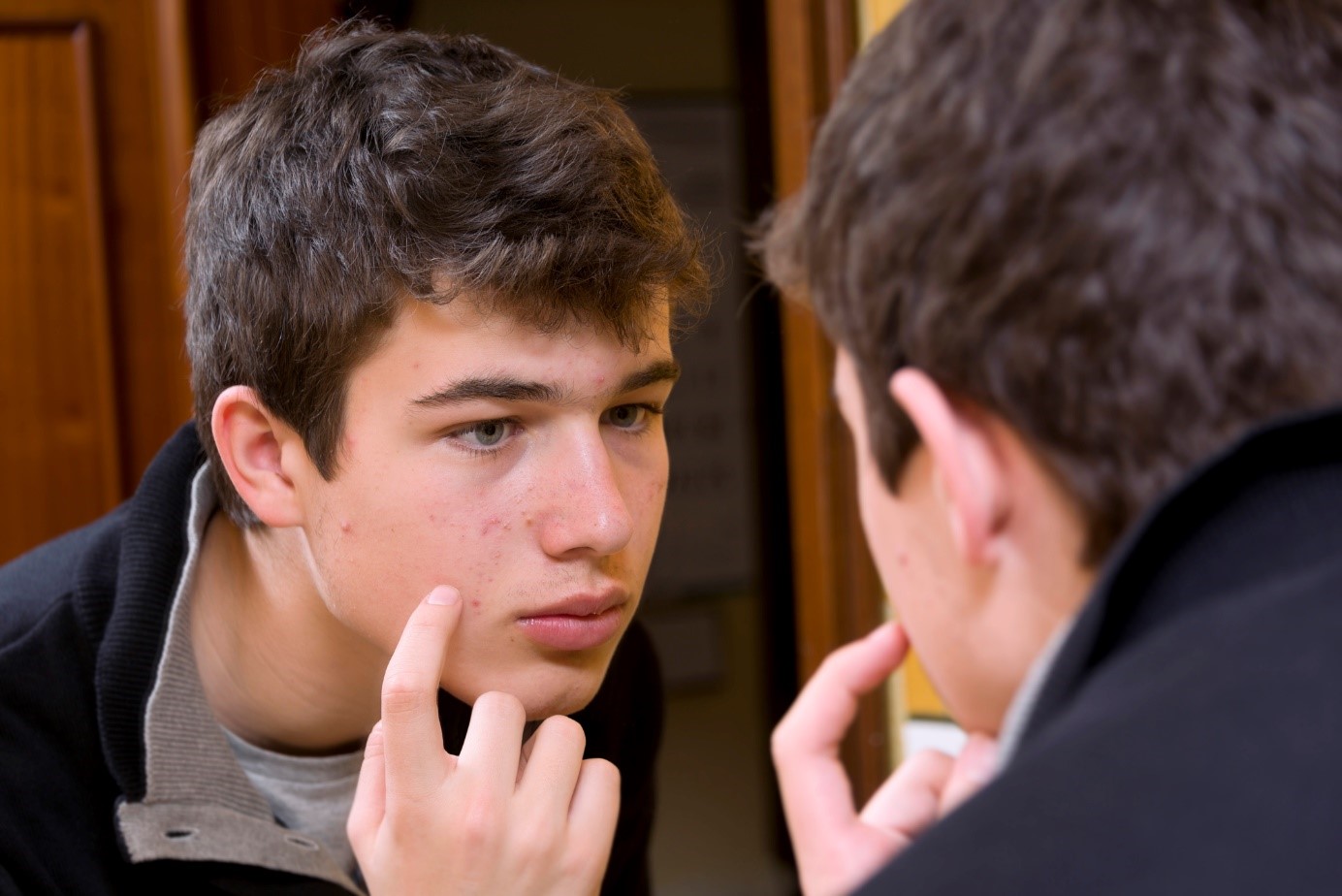
Causes
The basic pathogenetic factors involved in the development of acne include:
- increased and accelerated production of keratinized cells
- excessive sebum production stimulated by increased androgen production
- microbial colonization with Propionibacterium acnes
- inflammatory reactions
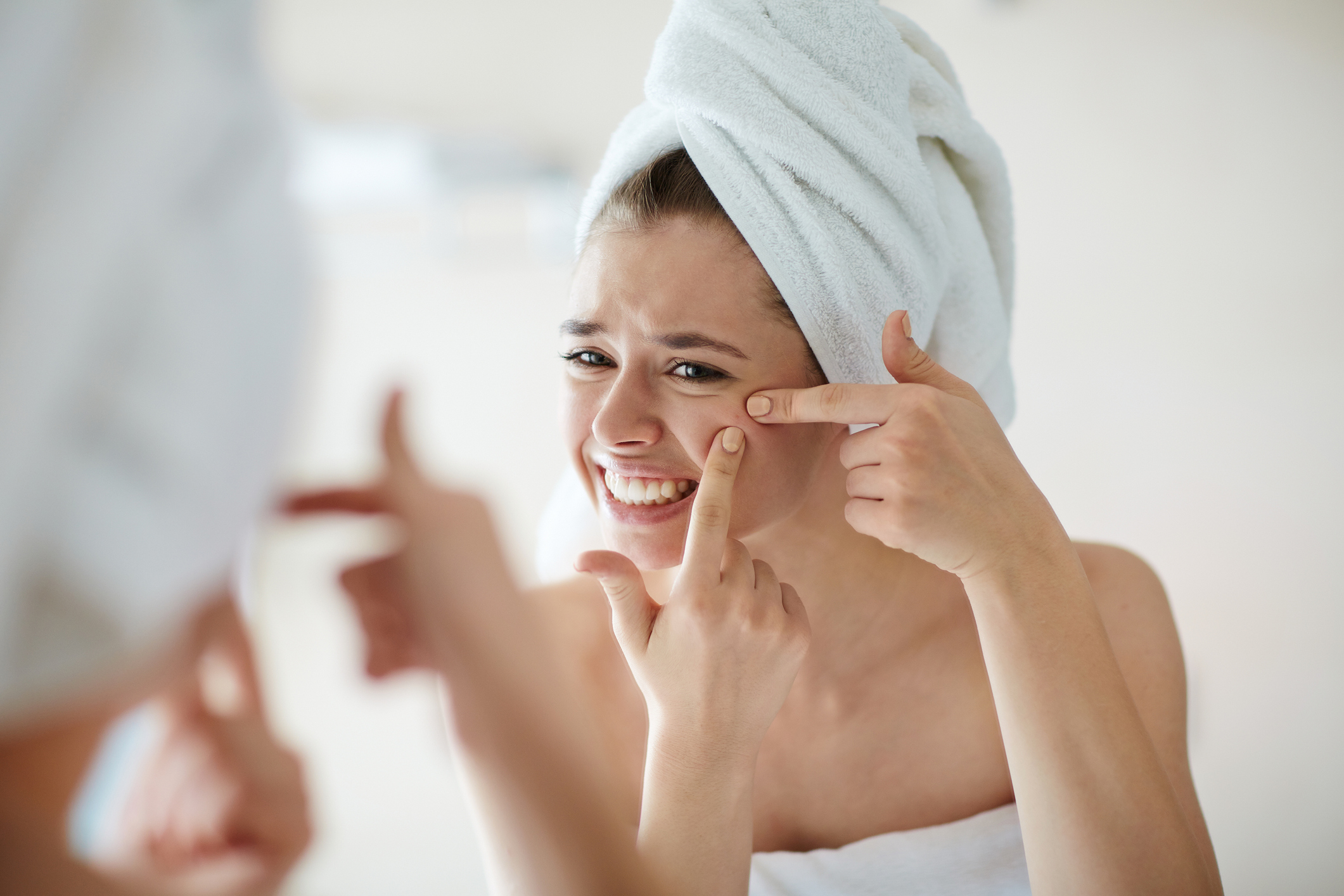
Symptoms
The initial subclinical non-inflammatory lesion is a microcomedone that develops into a clinically visible non-inflammatory lesion in the form of a closed or open comedone.
Approximately 75% of closed comedones progress to the inflammatory manifestation of acne.
Closed comedones are small, slightly raised, whitish skin formations. At this stage, the orifice of the follicle of the sebaceous gland is not yet enlarged.
The accumulation of cornified cells and sebum clogs the follicle outlet, open comedones begin to appear on the skin surface.
Skin coloration is affected by the oxidation of the pigment melanin.
Papules are inflammatory lesions that differ from each other in size and degree of inflammation.
Papules can develop in three ways:
- from normal-looking skin
- from closed comedones
- from open comedones
Pustules are whitish rashes with a red inflammatory rim filled with pus.
Nodules are a characteristic manifestation of the most severe forms of acne.
In the case of the most severe form of acne, cysts of several millimetres in size may form. They merge, persist for several years and do not tend to heal spontaneously.
The worst consequence of acne is the formation of scars that can persist for a lifetime. In some cases, they spontaneous disappear.
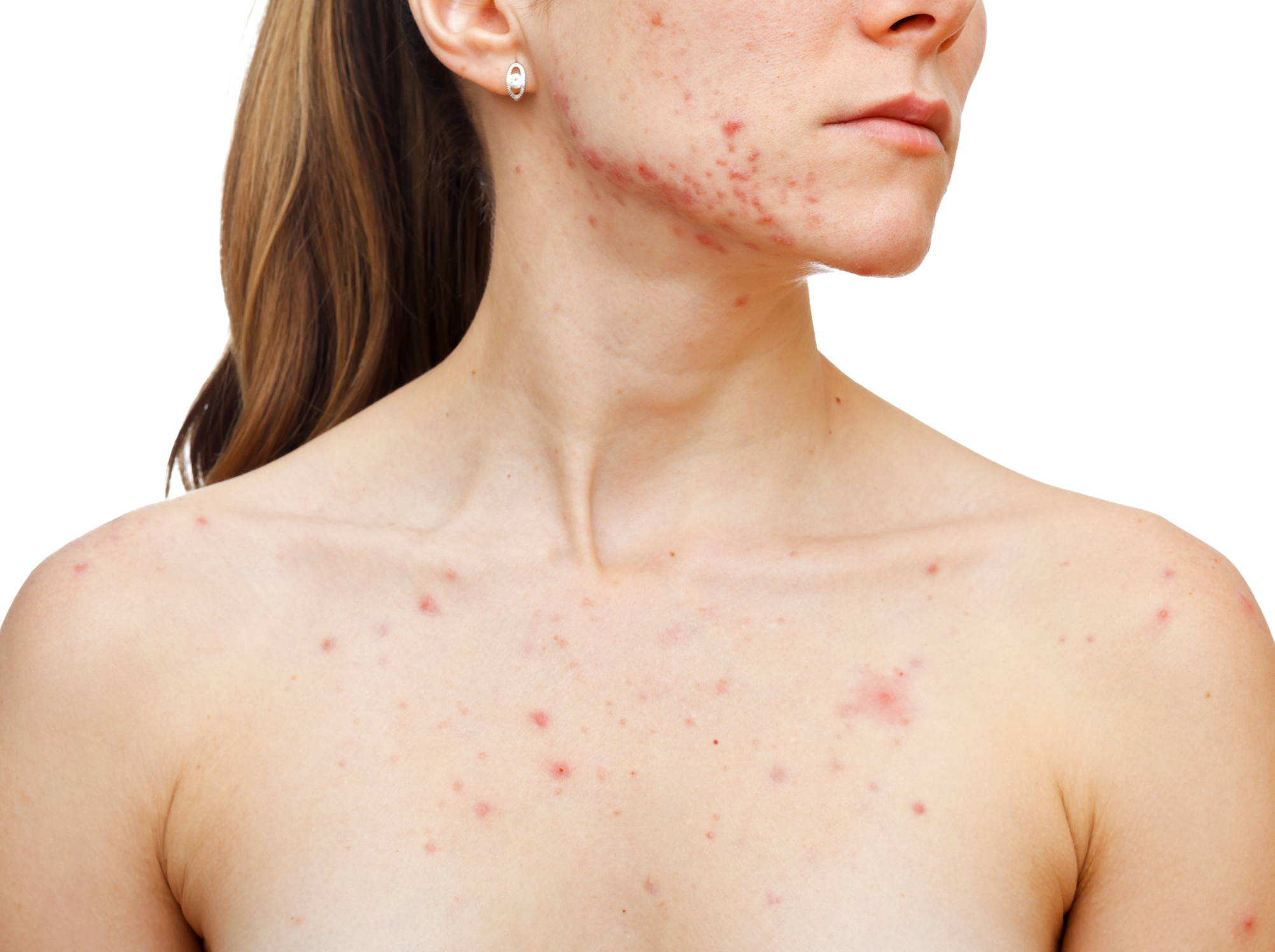
Table: Clinical picture of acne
| NON-INFLAMMATORY SYMPTOMS | INFLAMMATORY SYMPTOMS |
| microcomedone | papule |
| closed comedone pustule | pustule |
| open comedon cyst | nodule |
| cyst |
Forms of acne
There are many types of classification systems in the medical literature.
Based on causal factors, acne is classified as follows:
- forms of acne caused by endogenous factors – acne comedonica, acne papulopustulosa, acne conglobata and special forms of acne,
- forms of acne caused by exogenous factors – the skin comes into contact with acne-promoting substances,
- acneiform eruptions – arises as a side effect of taking certain medications.
1.
Acne comedonica is considered the simplest form of the disease, characterized by the formation of open and closed comedones.
The number of inflammatory lesions is minimal.
2.
Acne papulopustulosa is characterized by the formation of comedones and a greater number of inflammatory papules and pustules on the skin. In some cases, there is scar formation caused by inappropriate treatment.
Risk factors also include unprofessional intervention of the patient in the form of improper extrusion of comedones or inflammatory manifestations.
3.
Acne conglobata is a severe form of acne.
This form of acne is manifested in papules, pustules, inflammatory nodules, cysts and abscesses, sometimes with bloody pus and sebum. It is chronic and sometimes lasts for decades.
It affects men more often than women.
4.
Acne fulminans is characterized by the sudden appearance of acne conglobata with a tendency to form infiltrates and hemorrhagic necroses with atypical localization.
The disease mainly affects boys aged 13 to 17 years.
Typical manifestations include:
- fever
- joint and muscle pain
- high sedimentation
- leukocytosis
5.
Acne inversa is manifested by deep nodules.
The disease affects adult individuals.
The course of the disease takes the form of remissions and exacerbations, possibly continuing throughout a person's life.
6.
Acne neonatorum is acne comedonica in newborns in the first weeks of life and disappears spontaneously within two months.
Clinically, it manifests in minor inflammatory lesions on the face. Increased sebum secretion is caused by transplacental stimulation of the adrenal glands after childbirth.
7.
Acne infantum affects boys between the first and second year of life.
The clinical picture is characterized by the formation of comedones, papulopustules and nodulocysts, especially in the facial area. The disease usually resolves between the second and third years of life, but can sometimes persist for several years, and in rare cases, until puberty.
8.
Acne premenstrualis arises due to physiological fluctuations in hormonal levels during the cycle.
Clinically, it is manifested by the sudden appearance of painful inflammatory lesions on the chin, in nasolabial grooves or on the sides of the face. In exceptional cases, the area below the mandible, in the neckline or on the shoulders may be affected.
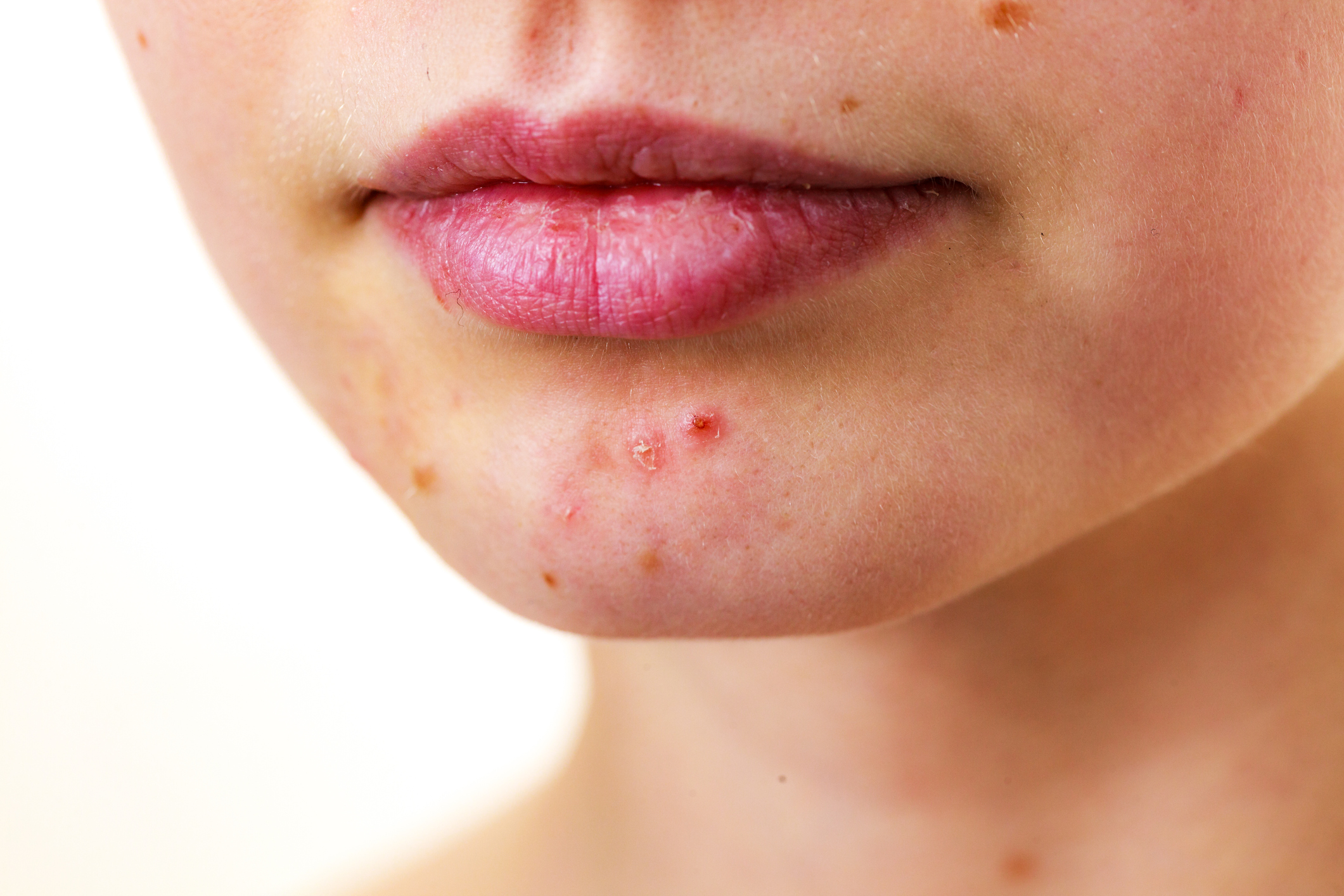
9.
Acne postpubertalis occurs in adult women after the age of 18, sometimes after the age of 25.
The cause may be increased sensitivity of the sebaceous glands to androgens.
Typical clinical signs are inflammatory lesions in the nasolabial grooves or on the chin.
Forms of acne caused by exogenous factors
1.
Acne cosmetica is formed in people as a result of unprofessional and prolonged use of cosmetic preparations containing comedogenic substances (petrolatum, lanolin, paraffin oil).
The typical manifestation is the formation of closed comedones in the chin, cheeks and forehead bumps.
2.
Acne oleosa, acne picea and acne chlorina (also referred to as occupational acne).
These forms of acne arise in occupations where the skin is in prolonged contact with comedogenic substances (kerosene, lubricating oils and tars).
3.
Mallorca acne is manifested by the sudden onset of acne or the aggravation of pre-existing symptoms of the disease due to the influence of a moist and warm environment.
Several factors are involved in the development of the disease:
- UV radiation
- sweating
- sunscreens
- the presence of oil in seawater
Acneiform eruptions
Diseases resembling acne are described in the following table.
Table: Acneiform eruptions
| Disease | Clinical manifestations |
| Rosacea | telengiectasia and erythema in the central part of the face |
| Demodicosis | papules, pustules to granulomatous manifestations on the face |
| Dermatitis perioralis | papules, pustules to granulomatous manifestations on the face |
| Syphilis papulosa | infiltrated reddish-brownish papules on the body, palms and feet |
Diagnostics
Acne is characterized by typical manifestations. So, the diagnosis of the disease is quite unambiguous.
In some cases, the doctor needs to conduct further examinations. In the case of significant inflammation, the doctor will take a smear from the lesion necessary for culture and determine the sensitivity to antibiotics. Taking a blood sample for further laboratory tests is also recommended, especially in the case of general acne treatment.
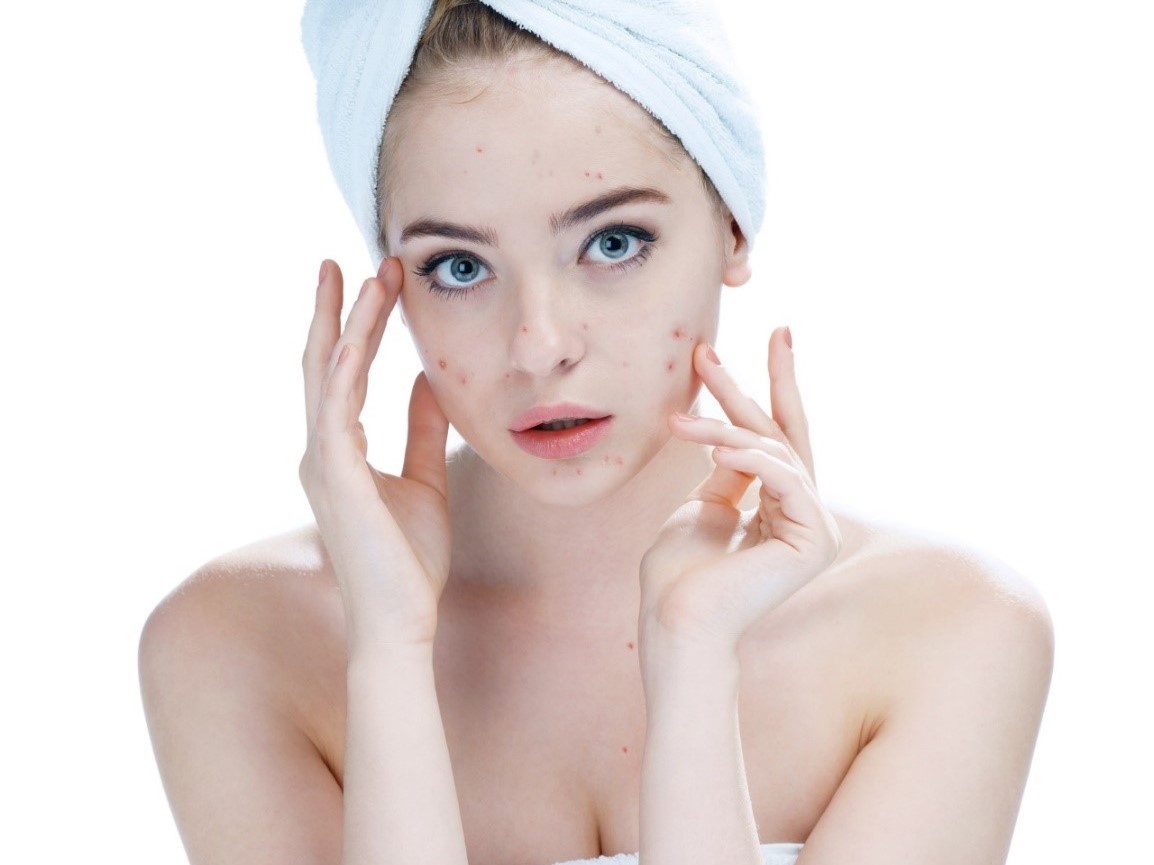
Course
Several factors influence the course of acne.
Factors affecting the clinical course of acne
Factors aggravating the progression of acne include:
- foods - milk, dairy products, sweets, white pastries, fatty foods
- smoking - the skin loses firmness and elasticity
- stress
- poor hygiene
- hot and moist environment
- impatience of the patient - popping and scratching inflamed acne
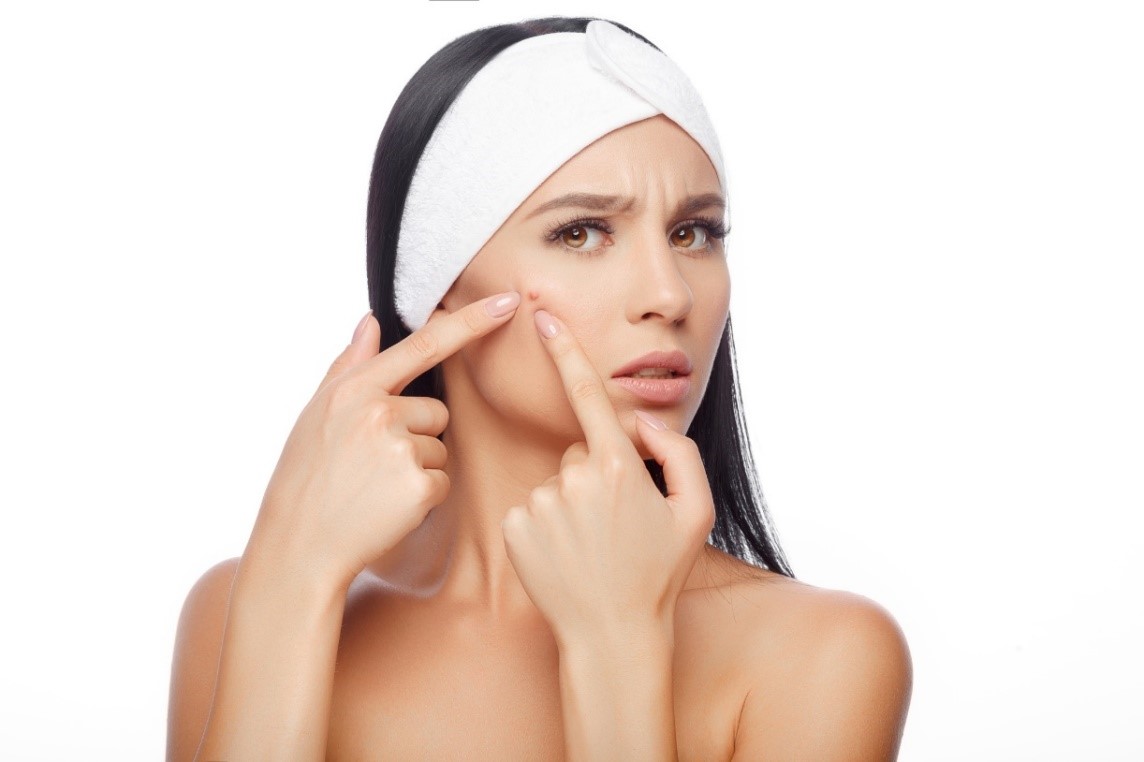
Conversely, regular sexual intercourse can contribute favourably to the stabilisation of hormonal ratios, which contributes to the decline of acne.
Also, spending time in the mountains and by the sea alleviates the symptoms of acne.
Protective factors include increased consumption of fish, vegetables and fruit.
Treating the skin at home
An important part of successful acne treatment is regular home skin care.
Cleansing the skin in the morning and evening with lukewarm water or in the evening with a cleansing gel is a must.
It is recommended to use a lotion to cleanse the skin, then apply the cream. Cosmetics should be selected by patients at the pharmacy, especially those that contain substances that reduce inflammation and regulate sebum production.
To cover the manifestations of acne, it is recommended to use anti-comedogenic preparations that do not clog the pores.
Patients who apply makeup to their face should apply it using their fingers. Applying makeup with a sponge or brush can spread bacteria.
If you use brushes and sponges, they need to be cleaned and washed regularly.
How it is treated: Acne
Treatment of acne takes several forms: topical, general and physical
Show moreAcne is treated by
Other names
Interesting resources
Related










